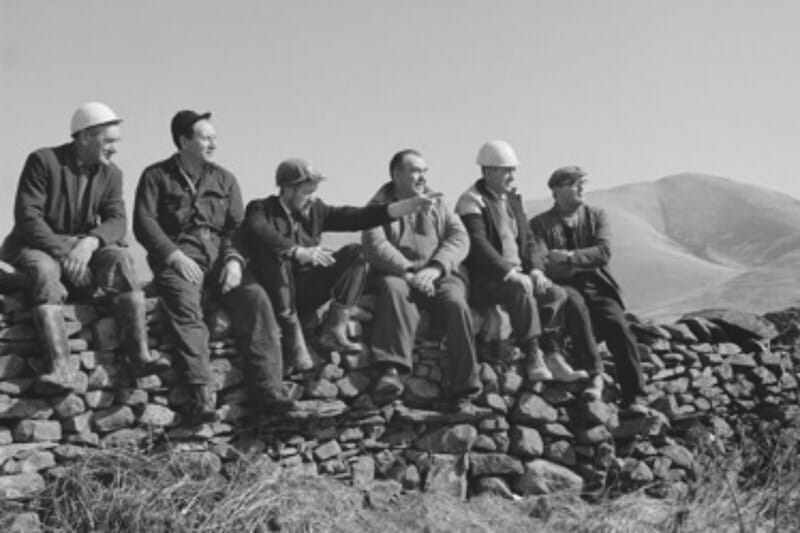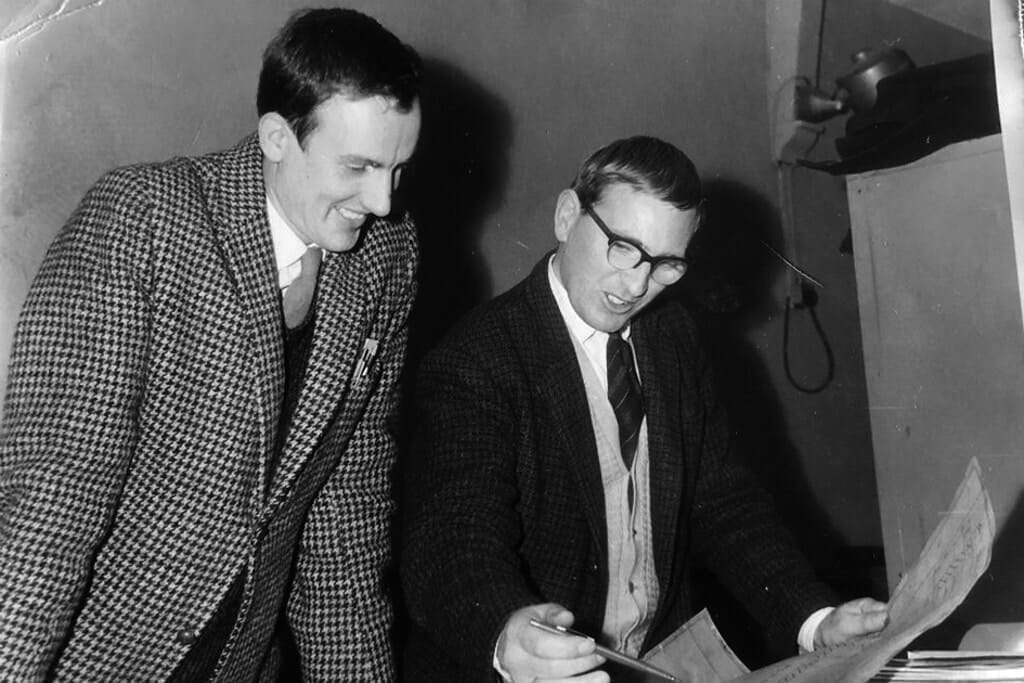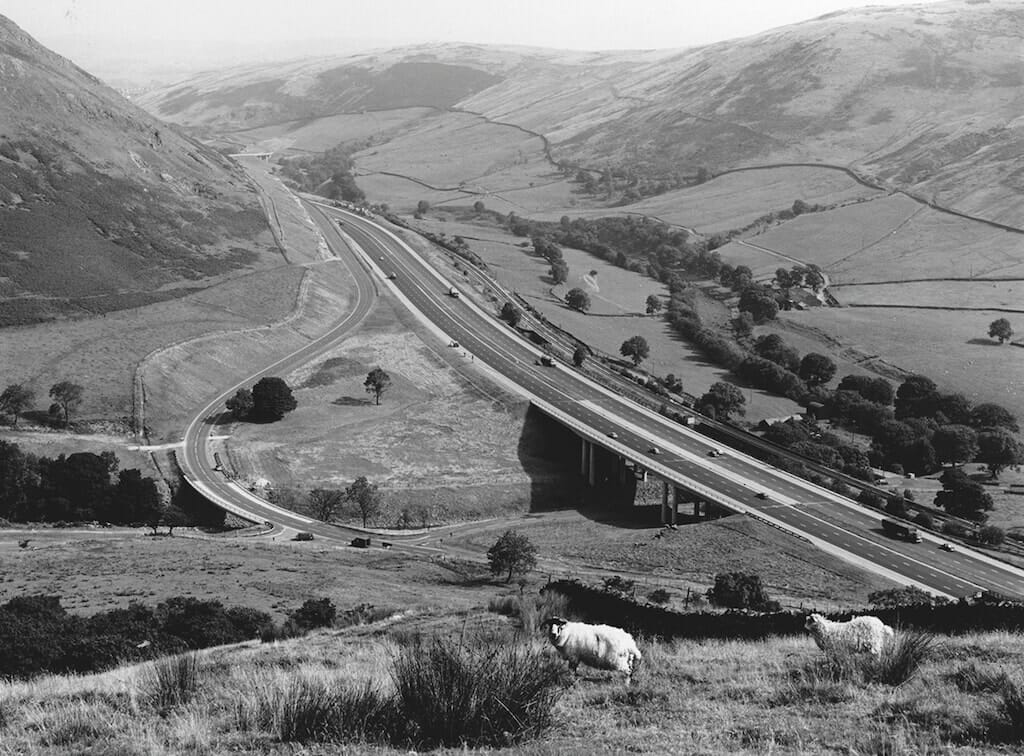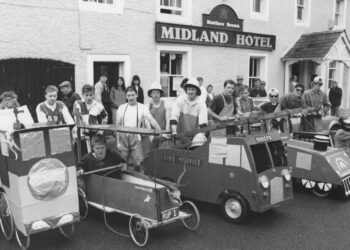
It is one of the highest and most beautiful stretches of motorway in the country — part of a post-war motorway construction jigsaw that, piece by concrete piece, revolutionised road travel in Britain. And retired engineers across the country are remembering their role in its birth, 50 years ago.
When the newest addition to the M6 — the 36 miles between Lancaster and Penrith — was opened in 1970, it incorporated the spectacular Lune Gorge and, just a few miles further north at Shap, the highest section of motorway in the country, at the time, at 316 metres above sea level.
The M6 through the Lune Gorge is one of the most spectacular stretches of motorway in the country, supporting thousands of tourism jobs in the county.

Civil engineering specialist Laing was appointed to build the 14-mile Killington to Tebay section running alongside the River Lune, hugging the contours of the Cumbrian hills and following in the footsteps of Roman road builders and Victorian railway engineers some 1,900 years and 125 years before them.
The work through the beautiful, but, at times, beastly, Lune Gorge — the weather and ground conditions were some of the most challenging ever faced by UK engineers — was the biggie-in-the-middle of five separate construction contracts making up the new Lancaster to Penrith M6.
The new motorway literally paved the way for faster, safer and more reliable journeys to the far north and Scotland and boosted the industrial and tourism economies of Cumbria.

“At one stage, I had on every piece of clothing I had — including my pyjamas!”
Laing engineers Mike Gellatley, Harry Macdonald Steels, Selwyn Charles-Jones and almost a thousand other roadworkers faced a unique battle of engineering wits against ground conditions and the elements to build a stretch of motorway frequently voted the most beautiful in the country and even highlighted today by Visit Cumbria.
Mike, a fellow of the Institution of Civil Engineers (ICE) and former London Underground chief engineer, arrived at Tebay in October 1967, having cut his teeth on the Stoke to Stafford section of the motorway.
“It was an amazing project to work on,” he said, 50 years on.
“An isolated greenfield site with difficult terrain and pretty hostile weather a lot of the time.
“They had to strengthen the roads from Kendal and build a special supply-line road just to get plant and material to different parts of the construction site and it was a constant battle against the elements.
“Residents in the area were initially sceptical about the motorway, but it totally transformed journeys. In the days before the M6 a journey up to the to the far north and Scotland was a torturous adventure with vehicles often having to queue in winter to get past snow along the A6 at Shap.”
A memoir penned by Harry recalls being encouraged to leave the comforts of the company office to head “somewhere in the wilds north of Tebay” to get some civils experience.
He wrote: “The tops of the Westmorland fells in late October are a harsh contrast to warm offices in London! At one stage I had on every piece of clothing I had taken up from London with me — including my pyjamas — under the protective clothing supplied by Laing.”
Project manager Selwyn was Laing’s main man in overall charge of day-to-day construction at the location. Alongside the stresses and strains of delivering such a complex engineering project he recalls an amusing — and almost uniquely Cumbrian — occupational hazard.
“It was the sheep,” he explained. “On one occasion some had worked out how to jump the fence and lead the rest of the flock onto the construction site and it was our job to clear them off before we could start work.
“We solved the problem by putting them on a lorry and taking them to next section above and let them out … and that was the last of we ever saw of them!”

Keith Little, Cumbria County Council’s cabinet member for Highways and Transport, also remembers the arrival of the road.
He said: “It was a vital part of the development of Cumbria’s transport network, connecting communities and providing one of the most scenic sections of highway anywhere in the country to drive through.
“It made the county more accessible to the rest of the country and has enabled local businesses and residents to trade, travel and connect with the wider region. I am pleased to celebrate the 50th anniversary of this beautiful stretch of road — not many counties can boast about their motorway, but we certainly can in Cumbria!”
The 50th anniversary of the Lancaster to Penrith section prompted Alex Finkenrath, publications and communications manager of the John Laing Charitable Trust, to trawl the company’s archives and unearth everything from old photographs, newspaper clippings and even a fascinating 30-minute 1971 documentary preserved by the British Film Institute and focusing on the social aspects of the Lune gorge challenge, as much as the myriad feats of engineering. Much of the photographs from Laing’s involvement in motorway building across the era are preserved in a special Historic England archive.































